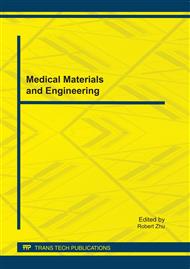p.421
p.426
p.431
p.441
p.446
p.451
p.459
p.465
p.469
Study on the Antioxidative Activity of Enzymatic Hydrolysates of Defatted Soybean Meal
Abstract:
Defatted soybean meal was hydrolyzed by Alcalase in research. Anti-linoleic acid peroxidation capacity was chosen as the response values. Then the optimal technique was established through a systemic research on the influencing factors, including enzymolysis temperature, time, proteases concentration and substrate concentration, etc. Results showed that the defatted soybean meal could be effectively hydrolyzed by the alkali protease Alacase2.4 L, and the optimal technique conditions were temperature 55°C, time 3h, pH 8.0, proteases concentration 19,200U per gram substrate, and substrate concentration 8%. The anti-linoleic acid peroxidation capacity of enzymatic hydrolysates could be 34.16%, with the hydrolyte degree of 35.0 %.
Info:
Periodical:
Pages:
459-464
Citation:
Online since:
November 2011
Authors:
Price:
Сopyright:
© 2012 Trans Tech Publications Ltd. All Rights Reserved
Share:
Citation:


